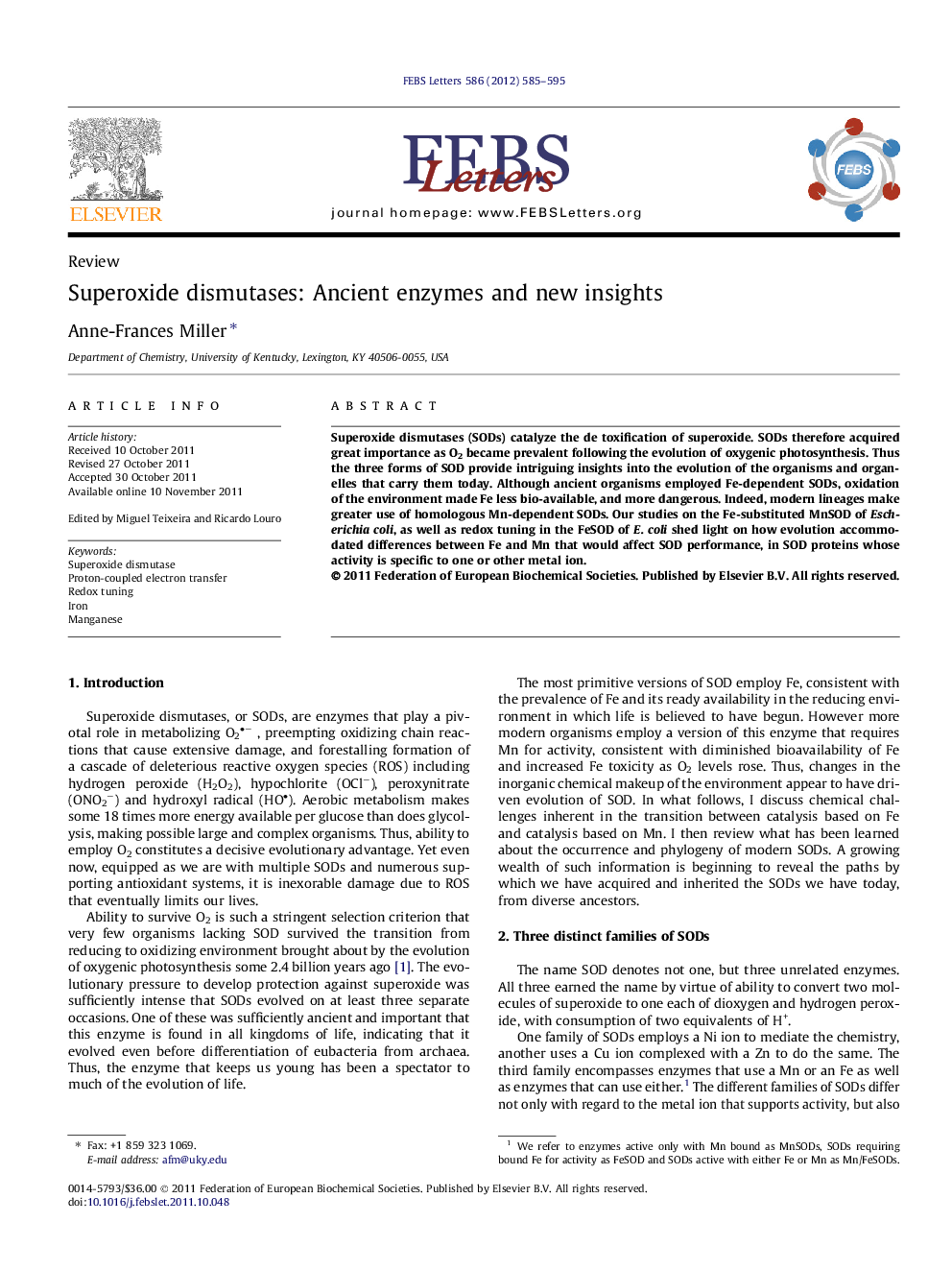| Article ID | Journal | Published Year | Pages | File Type |
|---|---|---|---|---|
| 10871813 | FEBS Letters | 2012 | 11 Pages |
Abstract
Superoxide dismutases (SODs) catalyze the de toxification of superoxide. SODs therefore acquired great importance as O2 became prevalent following the evolution of oxygenic photosynthesis. Thus the three forms of SOD provide intriguing insights into the evolution of the organisms and organelles that carry them today. Although ancient organisms employed Fe-dependent SODs, oxidation of the environment made Fe less bio-available, and more dangerous. Indeed, modern lineages make greater use of homologous Mn-dependent SODs. Our studies on the Fe-substituted MnSOD of Escherichia coli, as well as redox tuning in the FeSOD of E. coli shed light on how evolution accommodated differences between Fe and Mn that would affect SOD performance, in SOD proteins whose activity is specific to one or other metal ion.
Related Topics
Life Sciences
Agricultural and Biological Sciences
Plant Science
Authors
Anne-Frances Miller,
